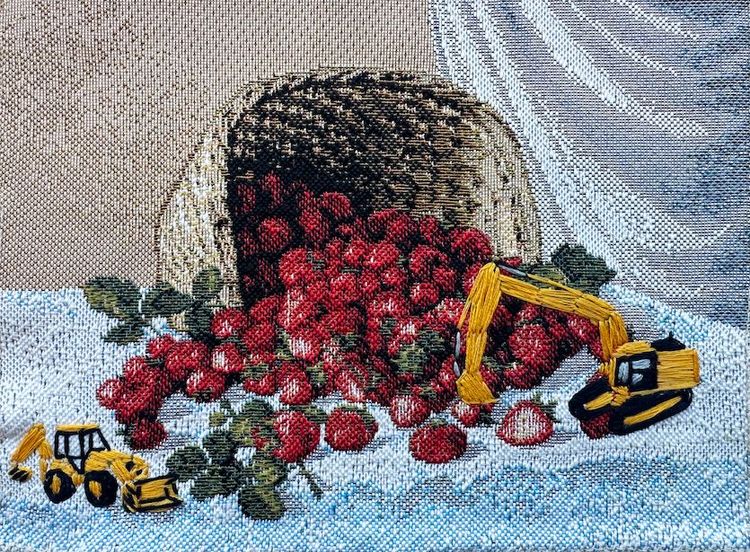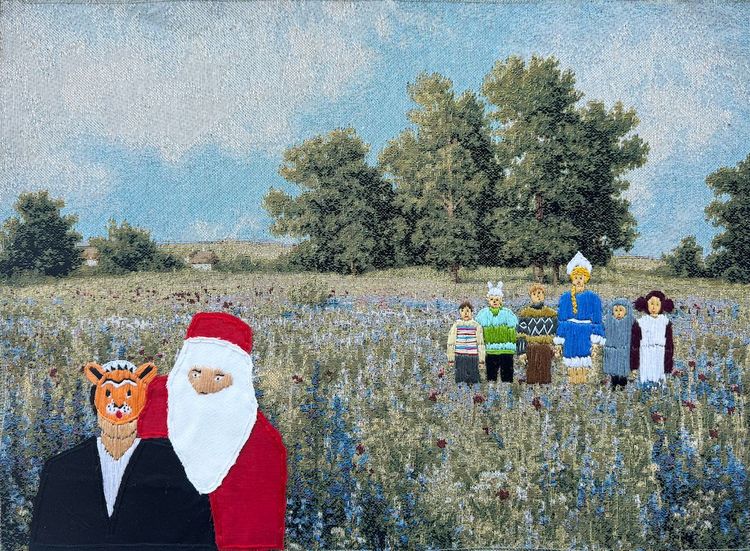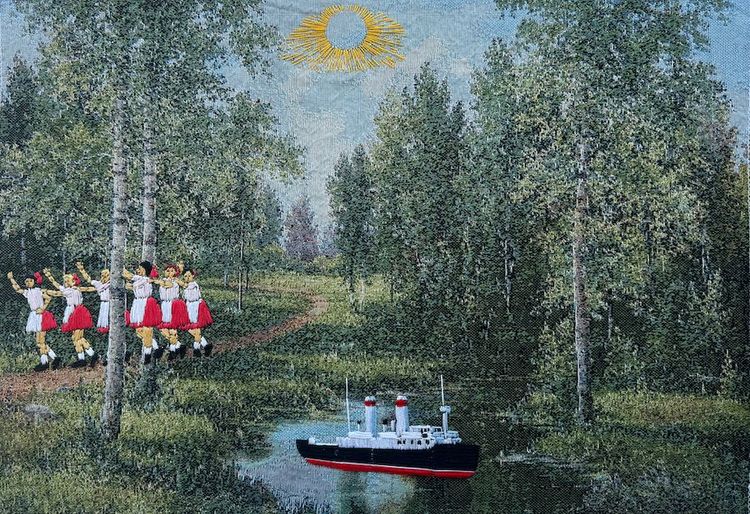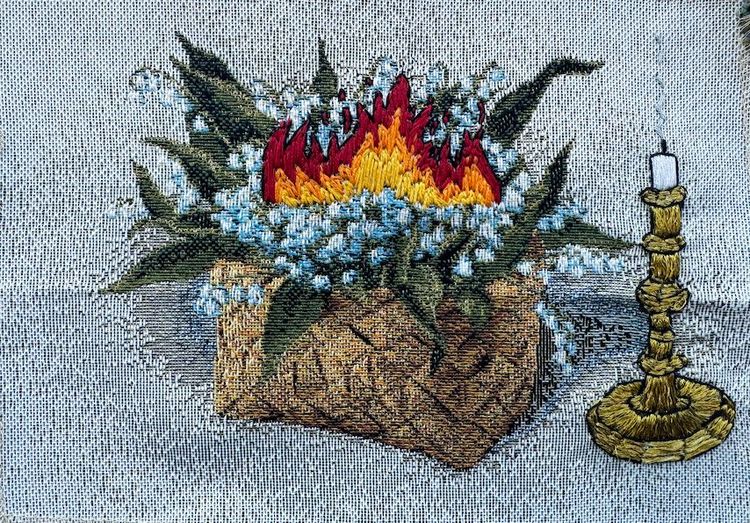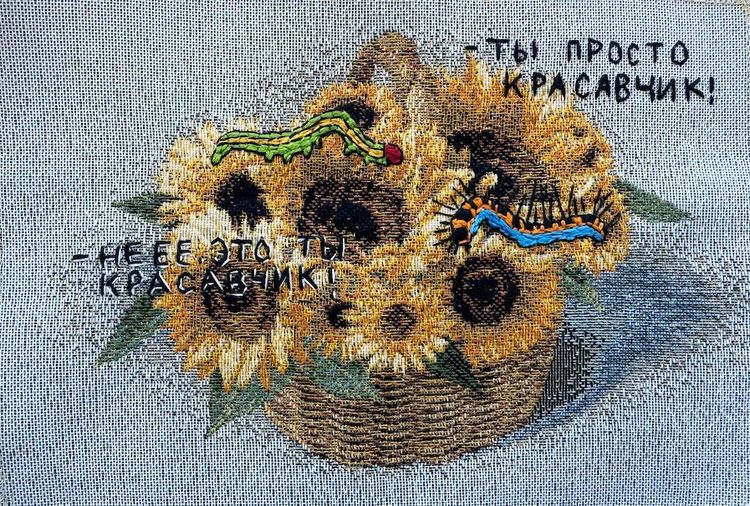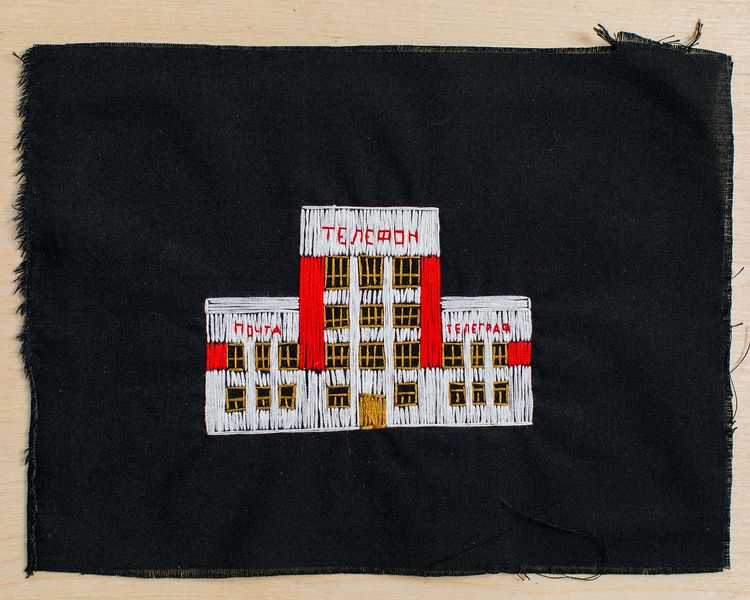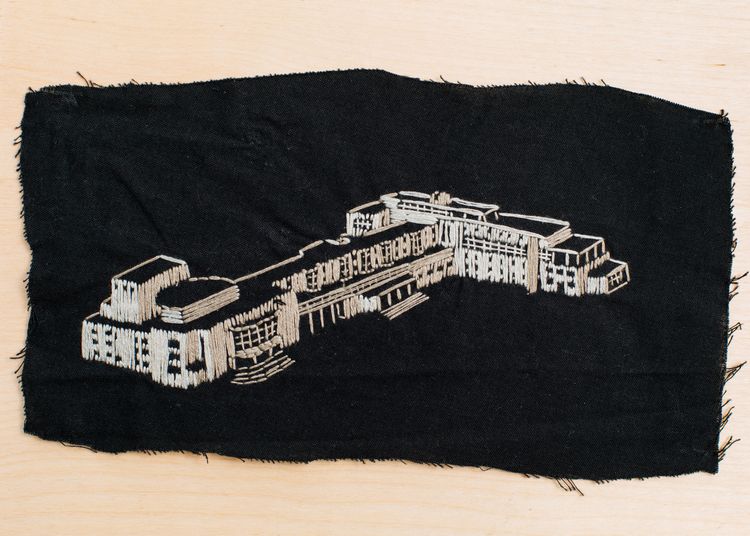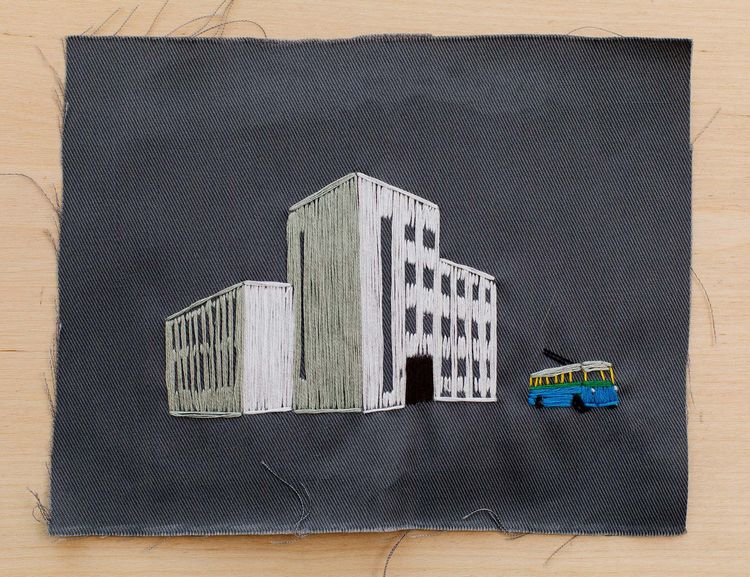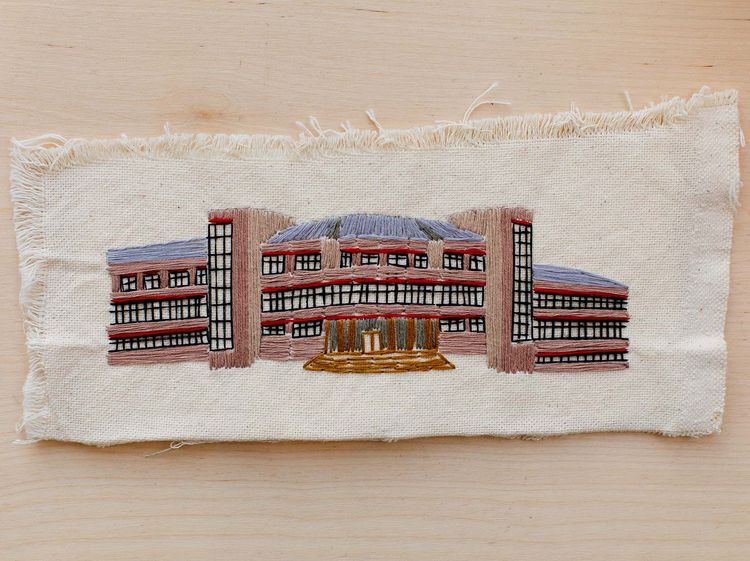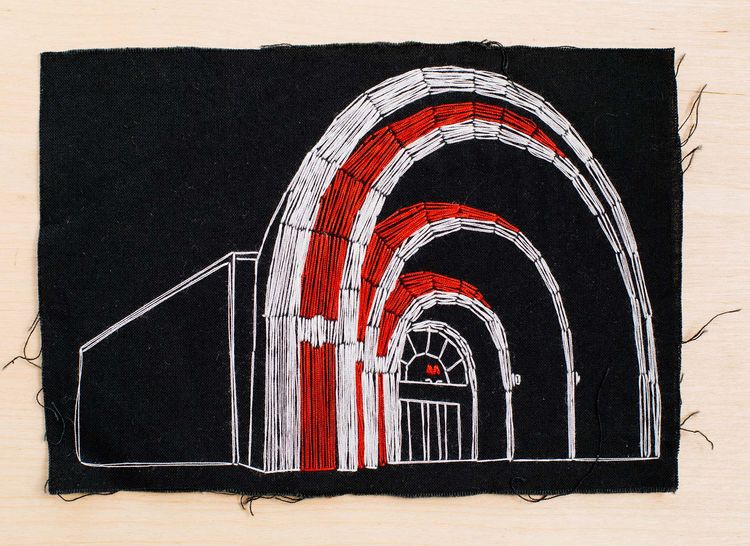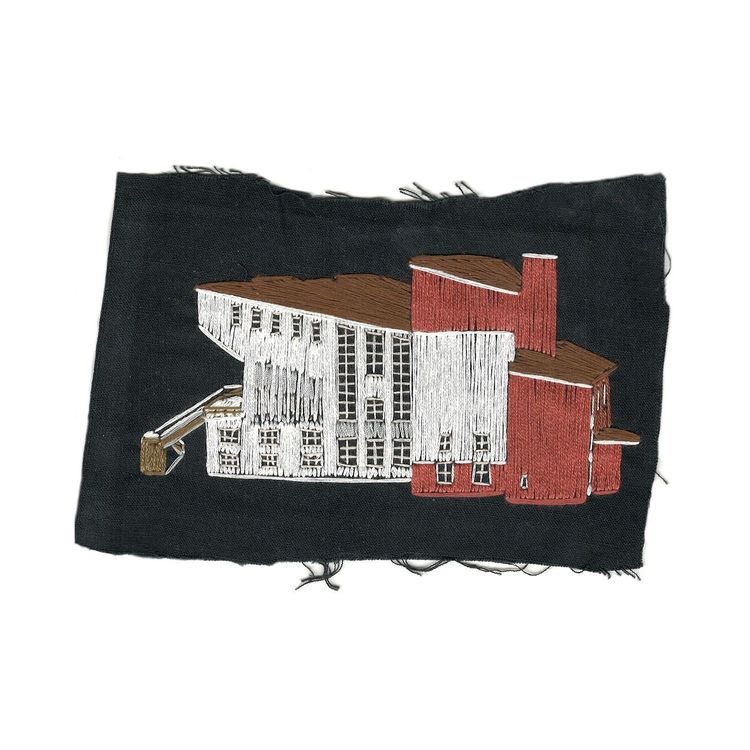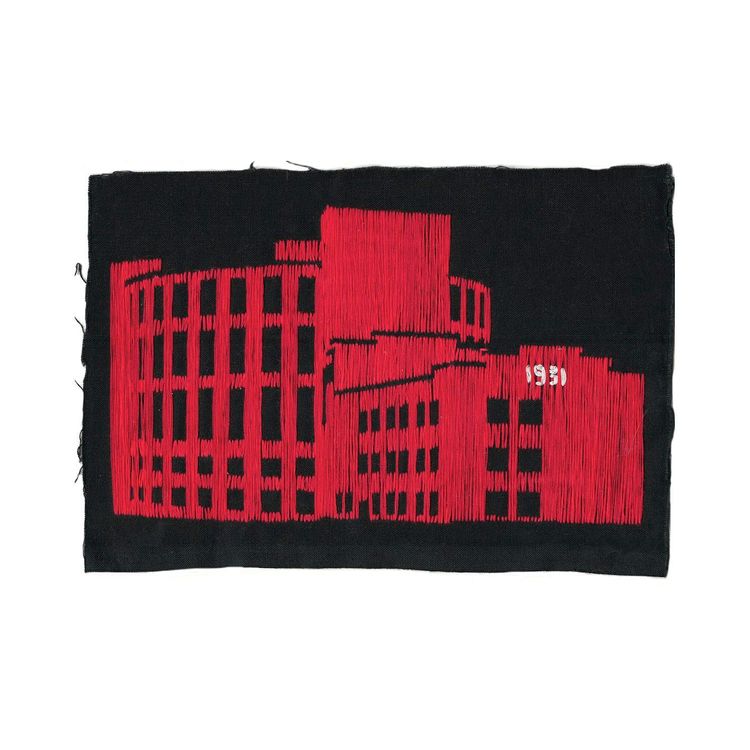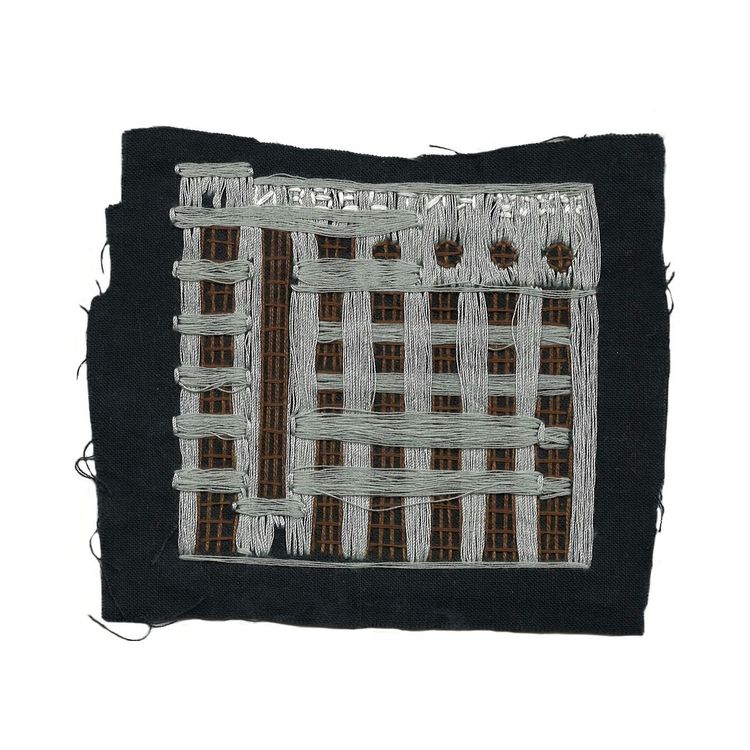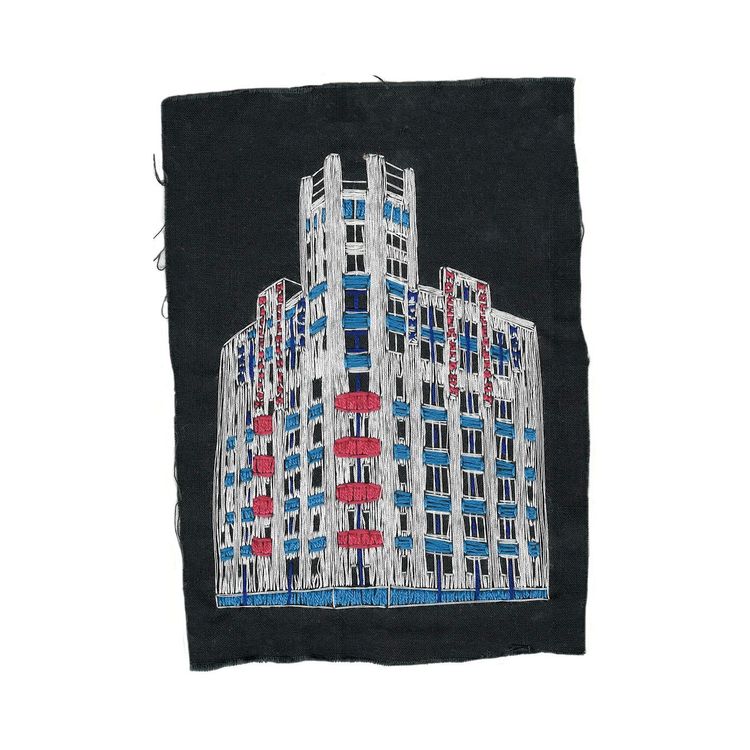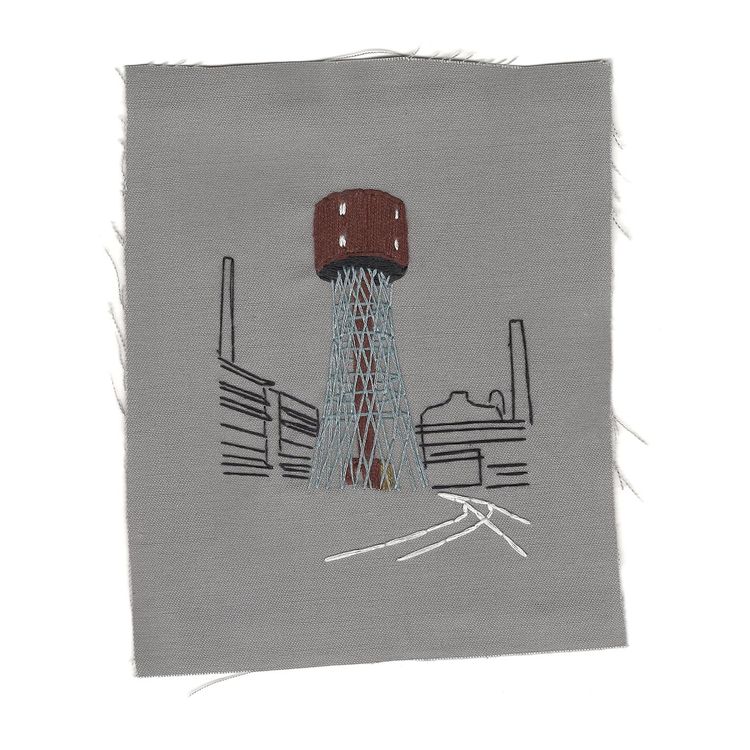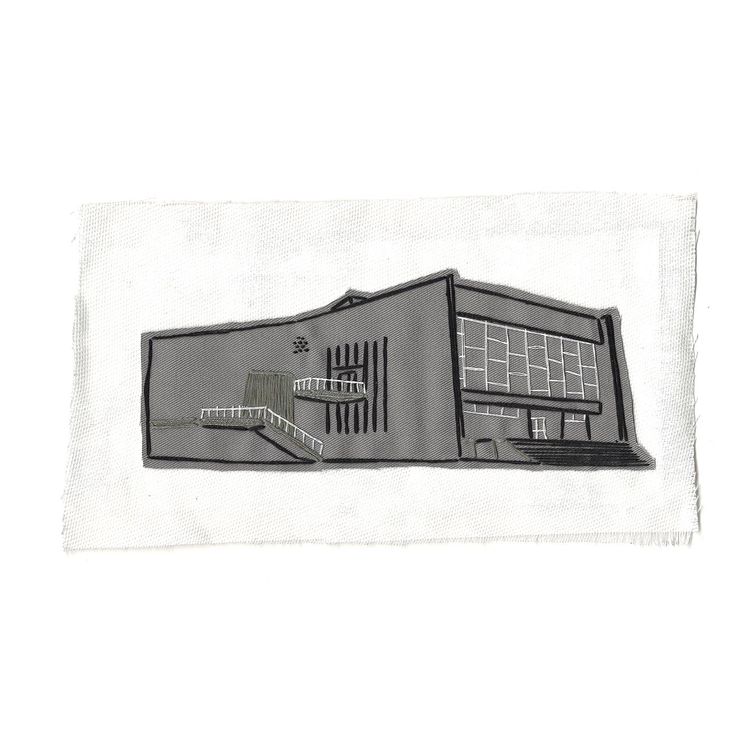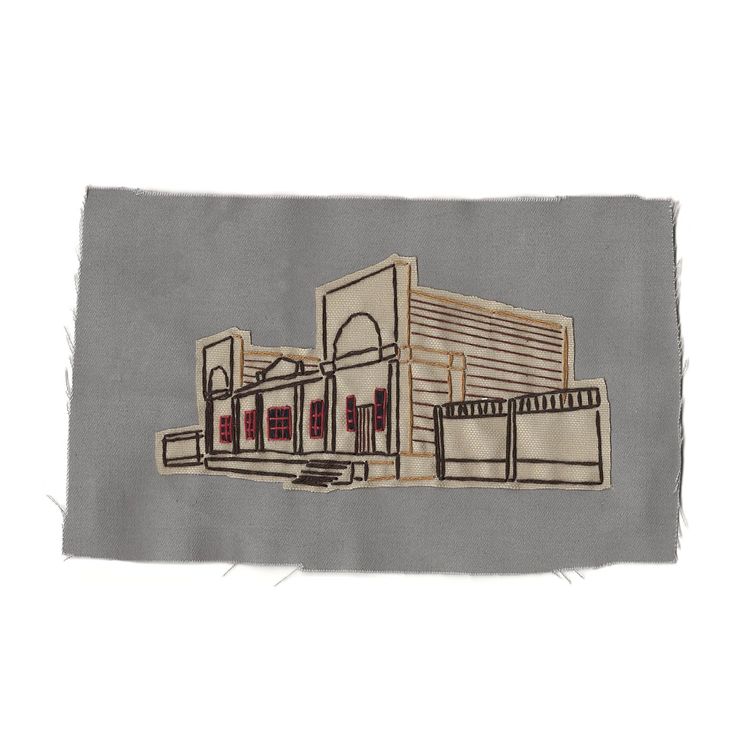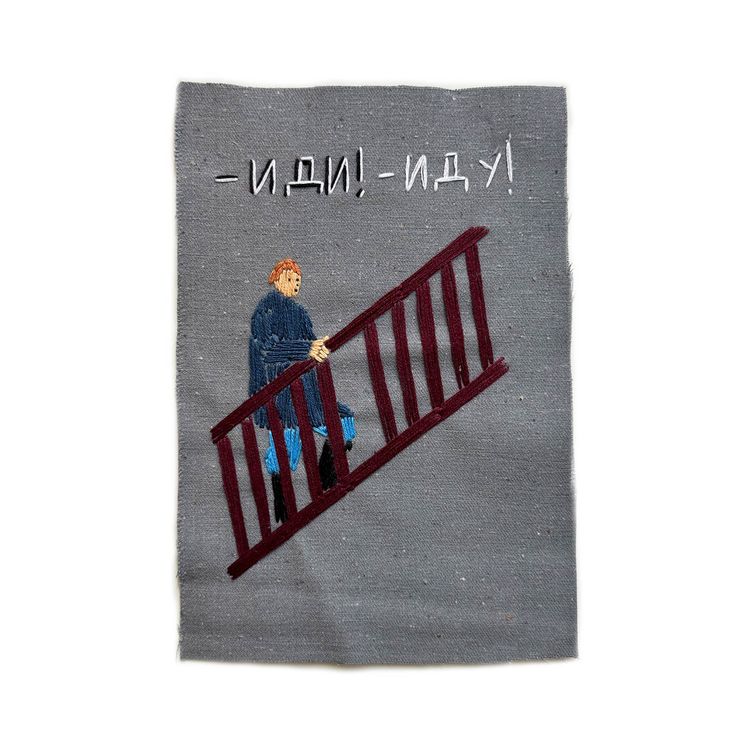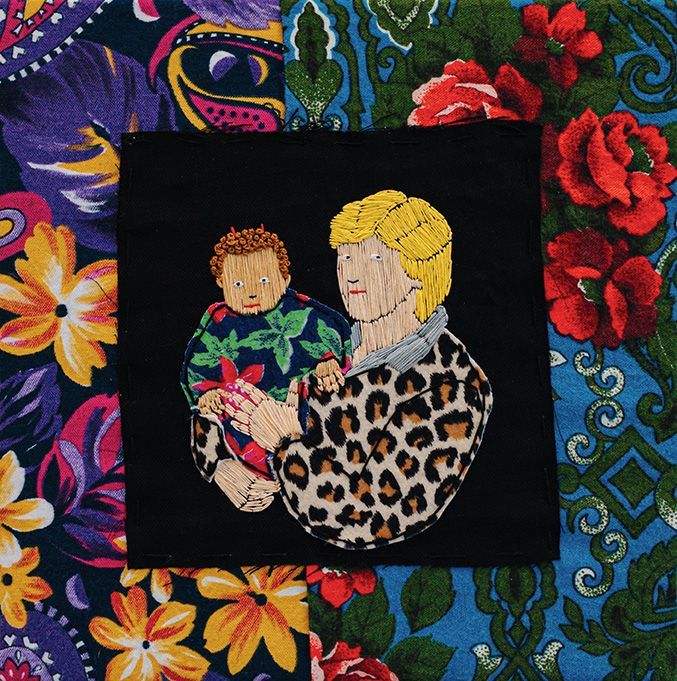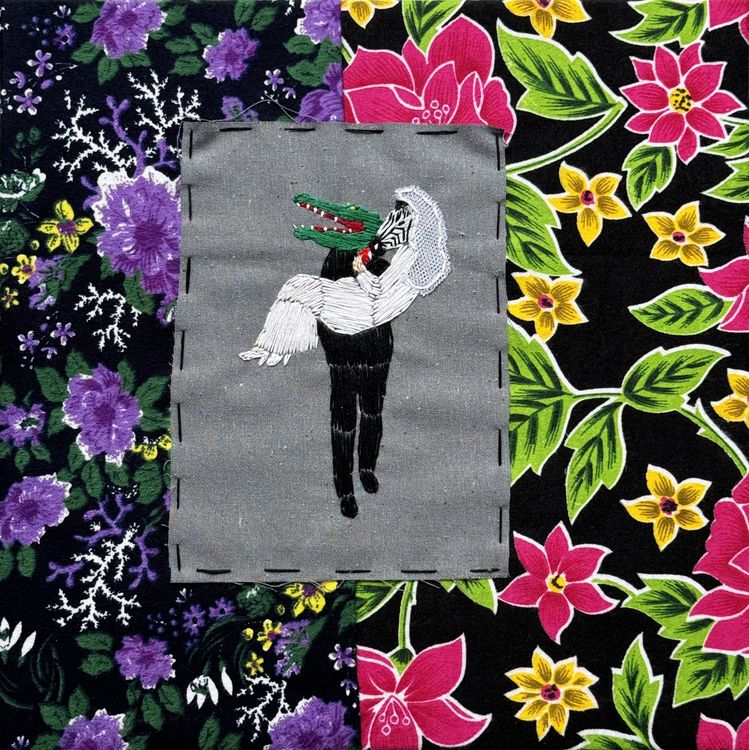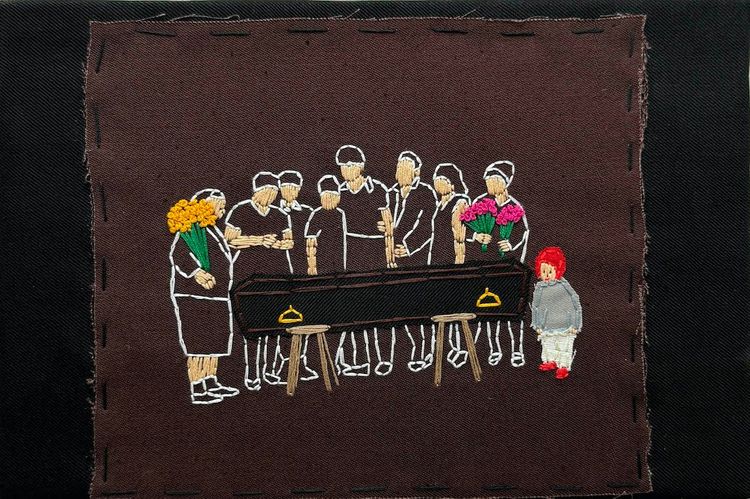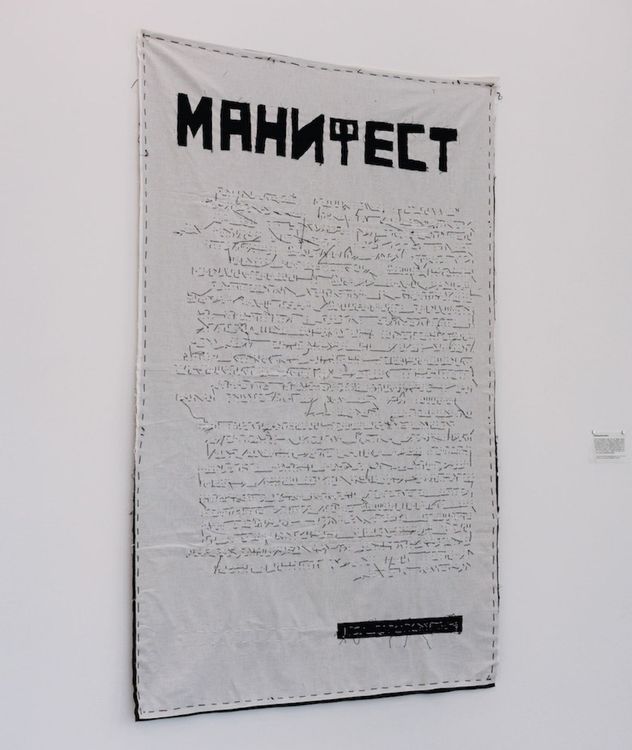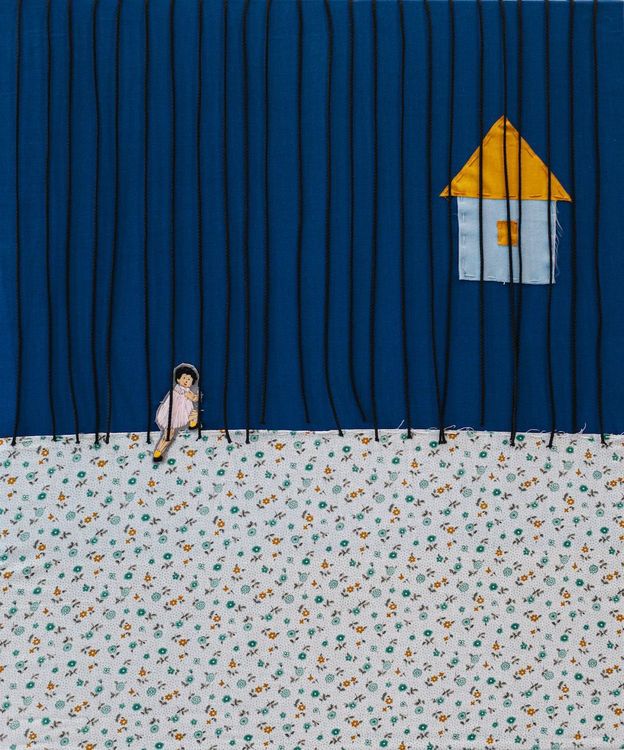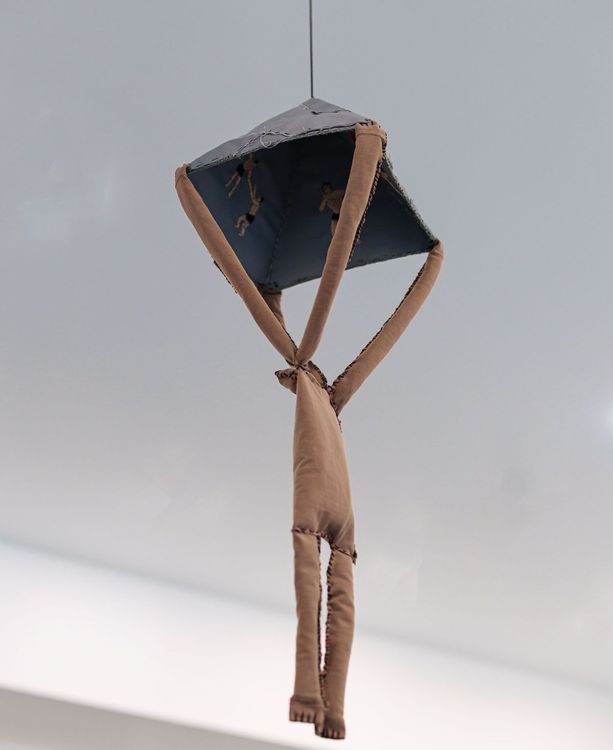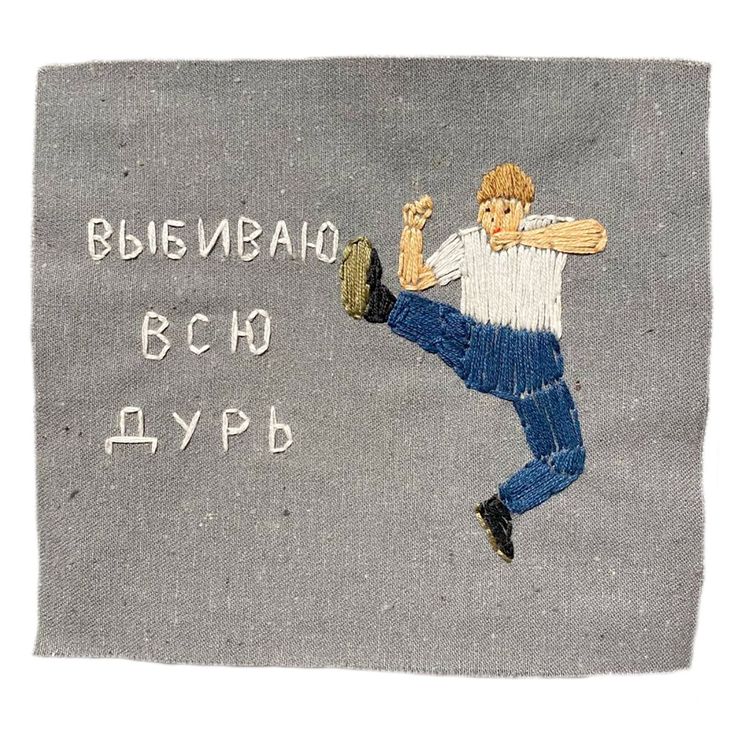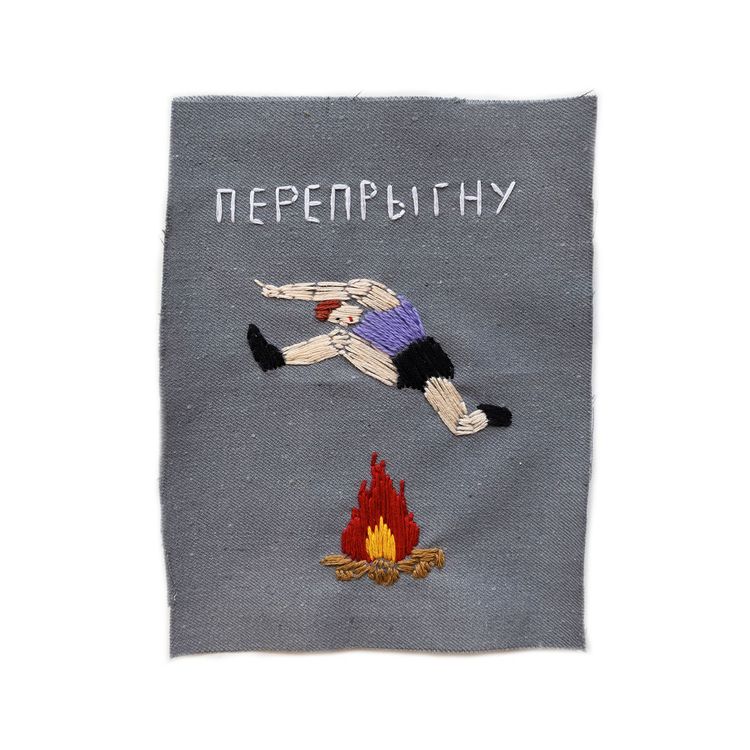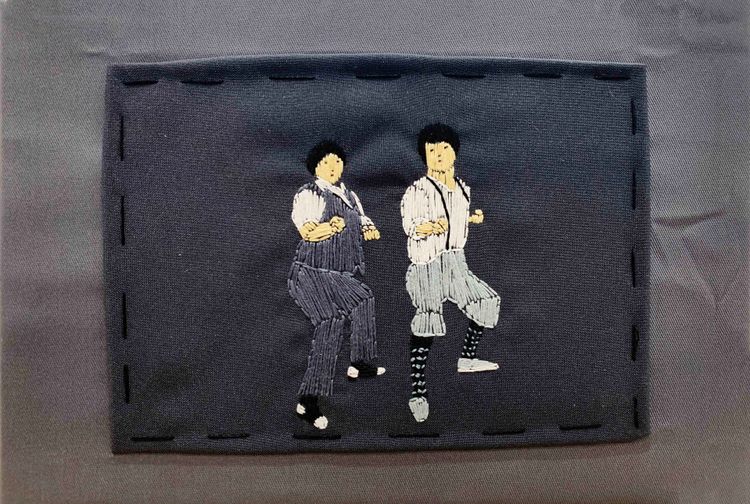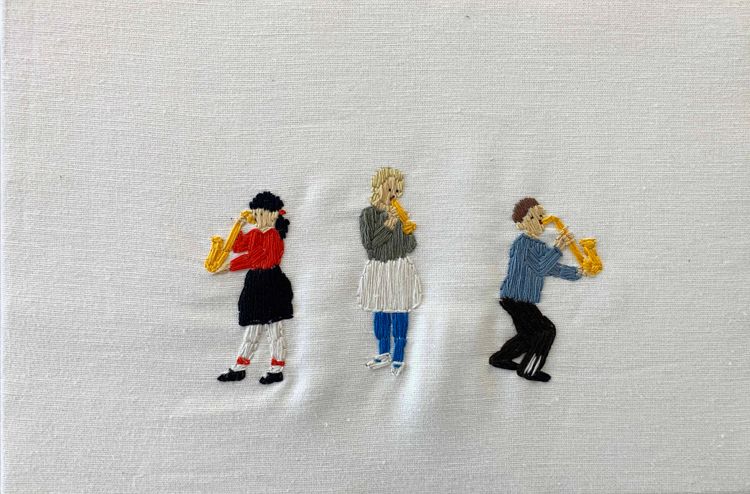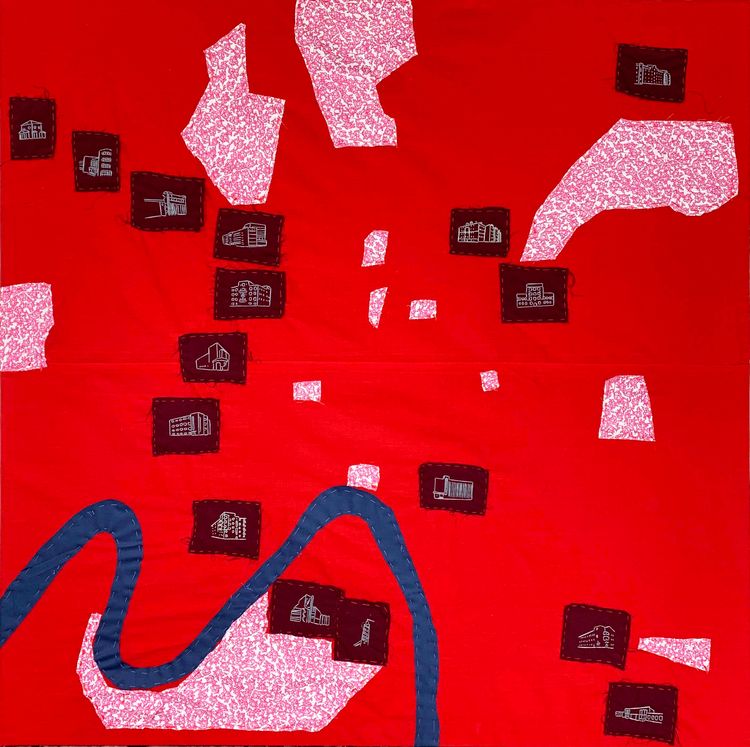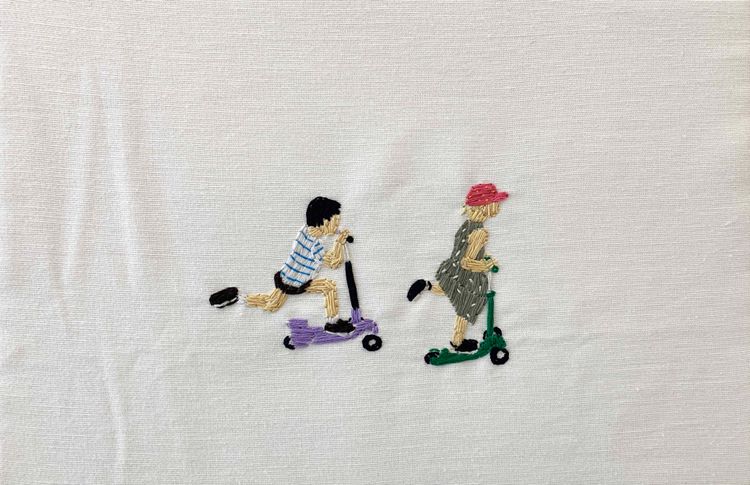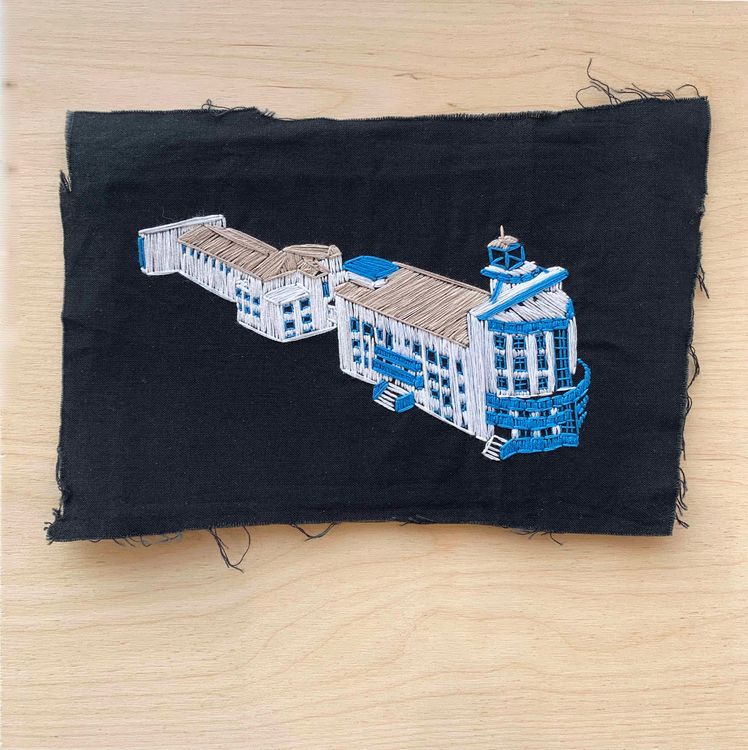
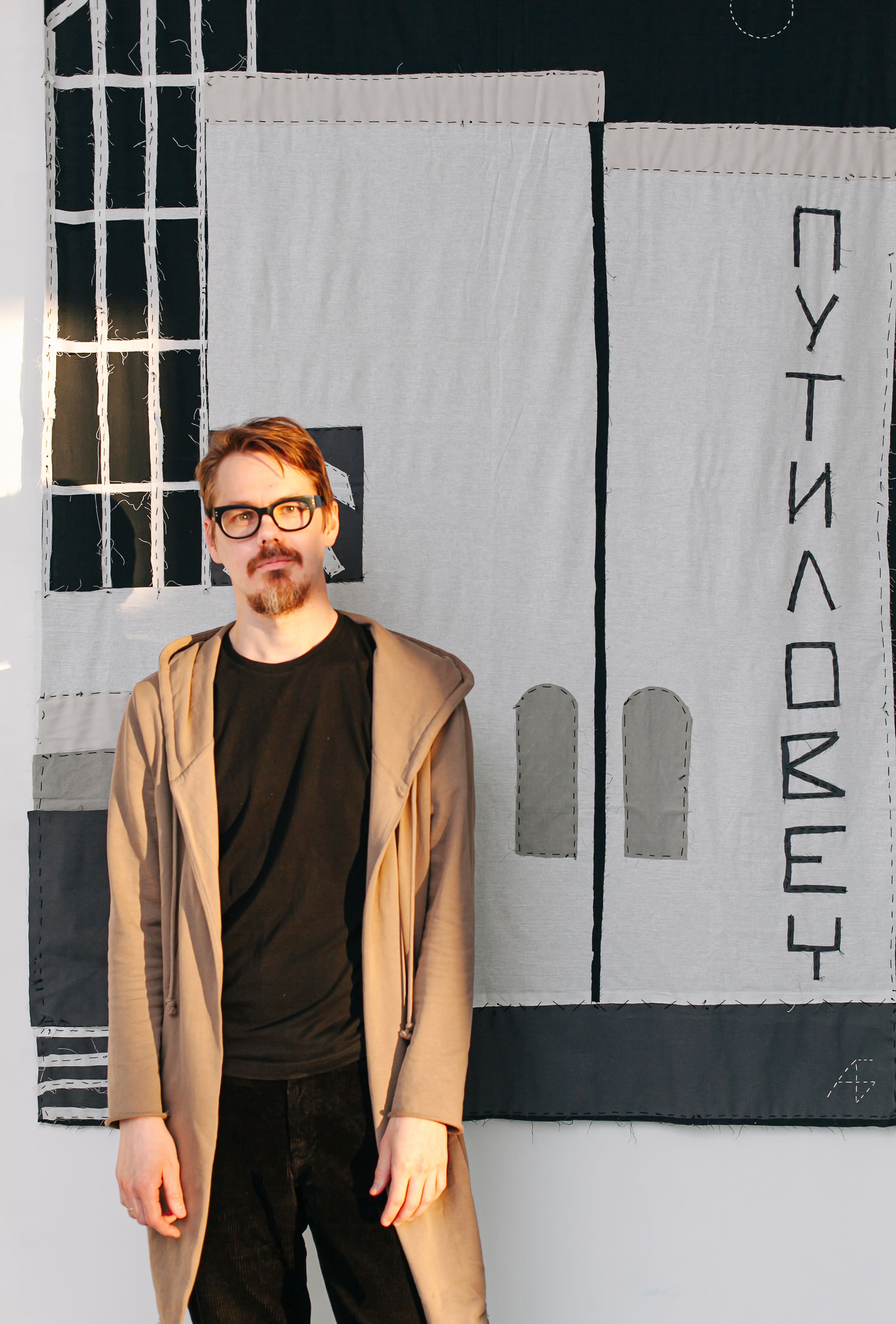
Braulov Sasha
Sasha Braulov (b. 1987) — artist, product designer (52 FACTORY). Works in the technique of embroidery with the themes of cultural memory and the architectural heritage of the avant-garde.
Education:
Graduated from the Higher School of Management, St. Petersburg State University.
Artist statement:
“Basically, my work is aimed at exploring two big themes: the architecture of the avant-garde of the 1920-1930s and the documentary of what is happening, what happened, sometimes filled with fantastic stories. In the case of architecture, one of the main tasks is to popularise and promote avant-garde architecture as a heritage of our culture. The documentary part is about experiences, observations and studies of what is happening around me and inside."
Selected exhibitions:
- 2013 "Letters to the other side of the bed", exhibition space Etazhi, St. Petersburg
- 2014 "Instant travel", Momentography, St. Petersburg
- 2015 Group exhibition "Unframed", Raum Mit Licht Gallery, Vienna, Austria
- 2016 "150 embroidered faces", Taiga, St. Petersburg
- 2018 Group exhibition "The first factory of the avant-garde", Union of Artists of the Russian Federation, Ivanovo
- 2021 "Embroidering avant-garde", Gallery on Shabolovka, Moscow
- 2021 "Avant-garde with a Red Thread", Most, St. Petersburg
- 2021 Group exhibition "Millennials in Contemporary Russian Art", Marble Palace of the State Russian Museum, St. Petersburg
- 2021 "When I grow up..(?)", DiDi Gallery, St. Petersburg
- 2021 Art Prospect Festival, St. Petersburg
- 2021 Personal exhibition "Constructivism without canvas", Museum of Architecture, Almaty, Kazakhstan
- 2022 Personal project "Architecture of the Past", DIDI Gallery, St. Petersburg
- 2022 Group exhibition "Mom do not say", Name Gallery, St. Petersburg
- 2023 Group exhibition "Journey to the home", DiDi Gallery, St. Petersburg
- 2023 Cosmoscow International Contemporary Art Fair, stand DiDi Gallery, Moscow
- 2024 Art Fair 1703, stand DiDi Gallery, St. Petersburg
- 2024 Special project of DiDi Gallery at the Expo-festival
- 2024 Group exhibition "News", Russian Museum, St. Petersburg
- 2024 Personal exhibition "Climbing", DiDi Gallery, St. Petersburg
- 2024 Winter market fair 1703, ZK "Repino-Leninsky", Leningrad region
Author's works

2023. Fabric, hand embroidery, 11x15 cm. Moscow.
"MONUMENT TO LENIN AT THE DEPOT OF THE OCTOBER RAILWAY"

The house on the street of the Batashev Brothers, 49. Vyksa, 1920s. Fabric, hand embroidery, 15x23 cm
SERIES "ARCHITECTURE OF VYKSA"
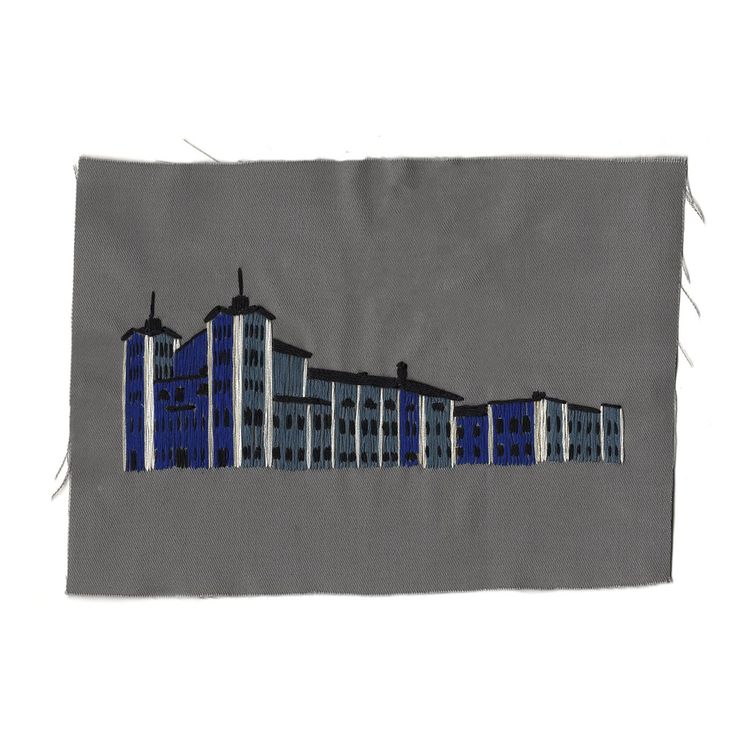
The Palace of Culture named after Lepse. Vyksa, 1929. Fabric, hand embroidery, 16x22 cm
SERIES "ARCHITECTURE OF VYKSA"

House of Krasnye Zori St., 24. Vyksa, 1930s. Fabric, hand embroidery, 14x18 cm
SERIES "ARCHITECTURE OF VYKSA"
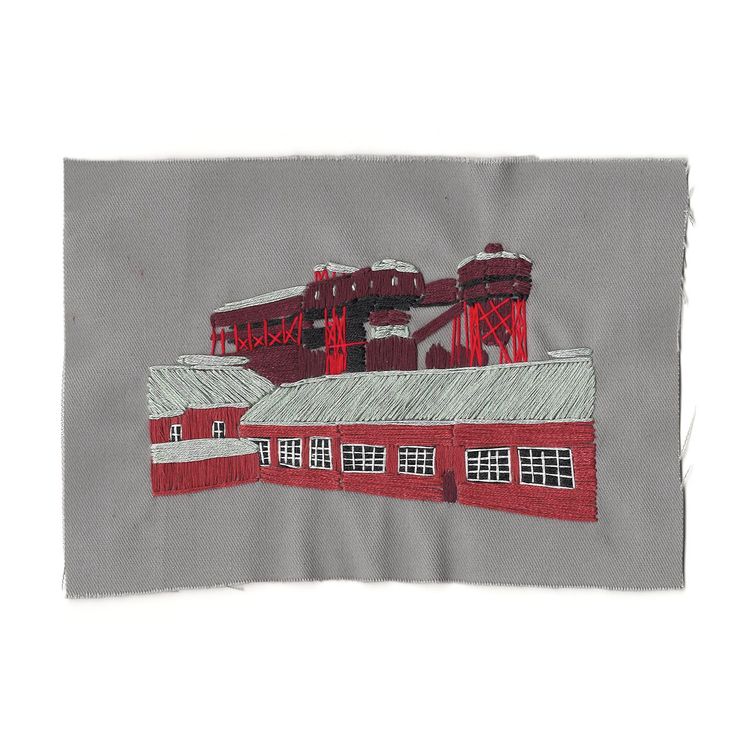
The blast furnace shop. Vyksa, 1930's. Fabric, hand embroidery, 14x20 cm
SERIES "ARCHITECTURE OF VYKSA"
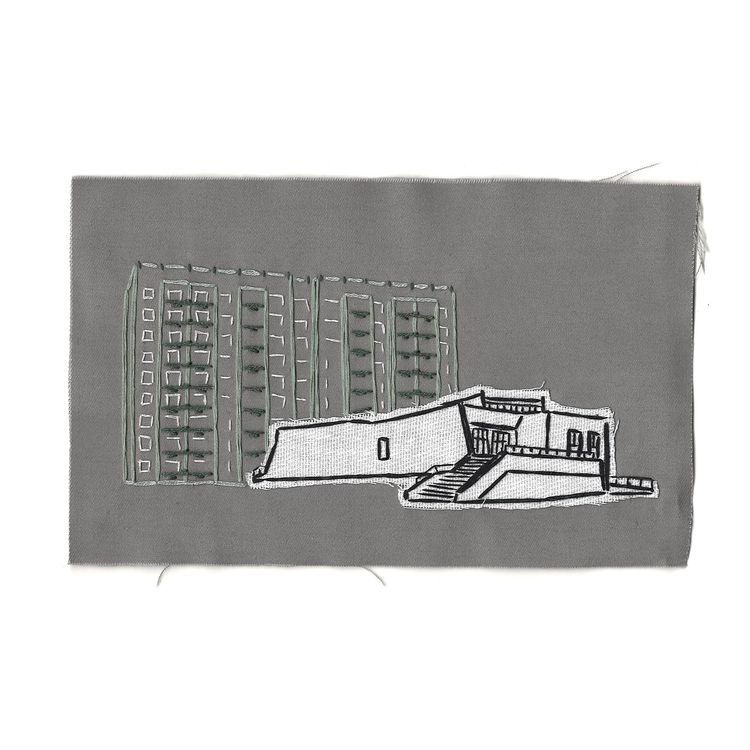
The 121-series large-panel house and the Volna cafe. Vyksa, 1985. Fabric, hand embroidery, 14x22 cm
SERIES "ARCHITECTURE OF VYKSA"
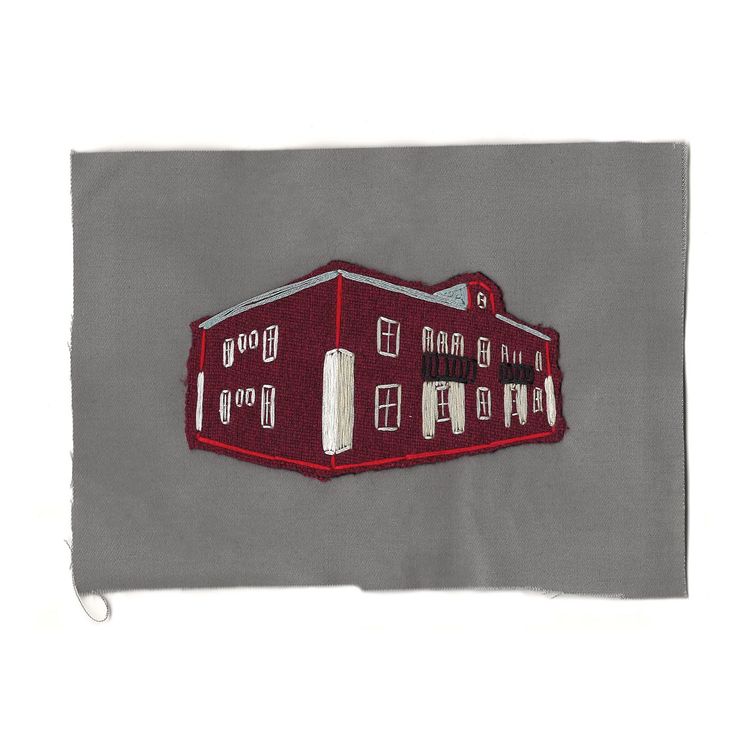
Apartment building Nakhimova St., 12. Vyksa, 1952. Fabric, hand embroidery, 16x21 cm
SERIES "ARCHITECTURE OF VYKSA"

The building of the metallurgical plant. Vyksa, 1920-1930s. Fabric, hand embroidery, 11.5 x 18 cm
SERIES "ARCHITECTURE OF VYKSA"
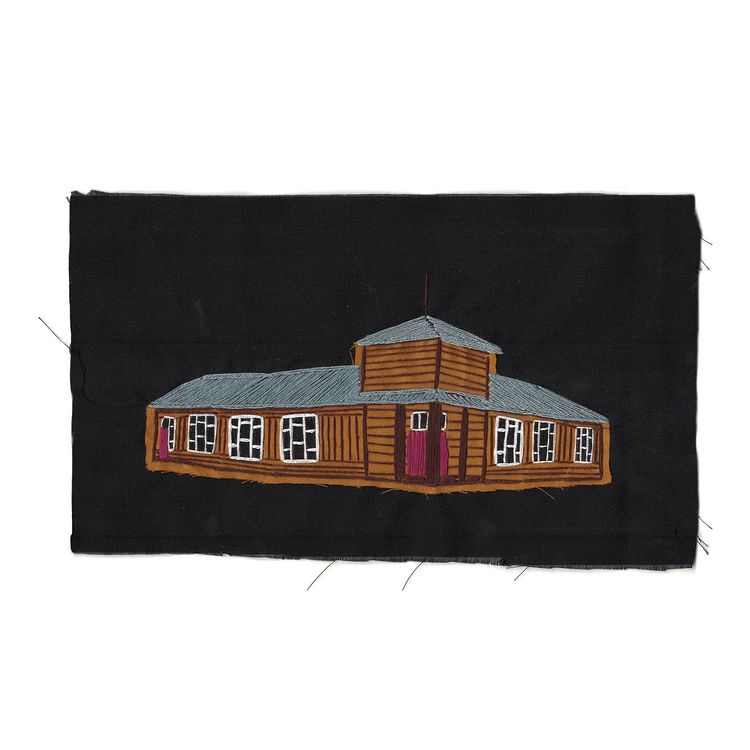
The "sixteenth" store. Vyksa, 1920s. Fabric, hand embroidery, 14x23 cm
series "ARCHITECTURE OF VYKSA"
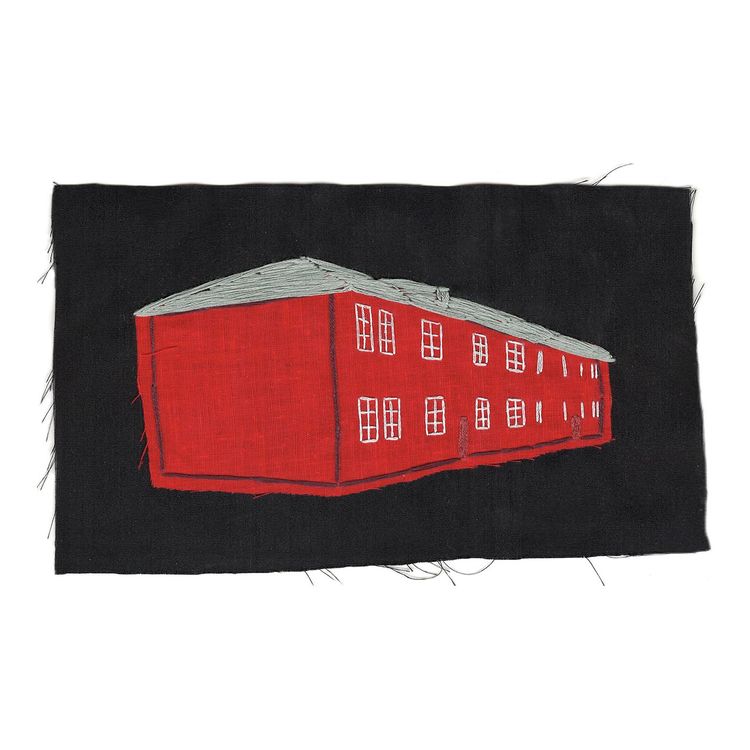
Factory apartment building on Krasnye Zori street. Vyksa, 1930s. Fabric, hand embroidery, 12x20 cm
SERIES "ARCHITECTURE OF VYKSA"
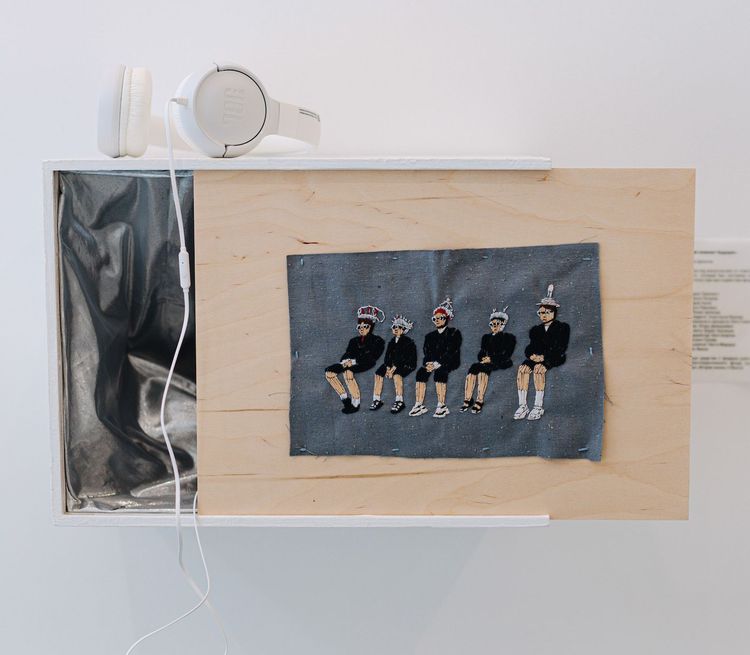
2024. Plywood, fabric, hand embroidery, lighting, 27.7 x 37.5 x 22 cm. 100% of the amount will go to the Vyksa fund for assistance to homeless animals "Second Life"
"THE ACADEMIC COUNCIL COMPOSES THE FUTURE"
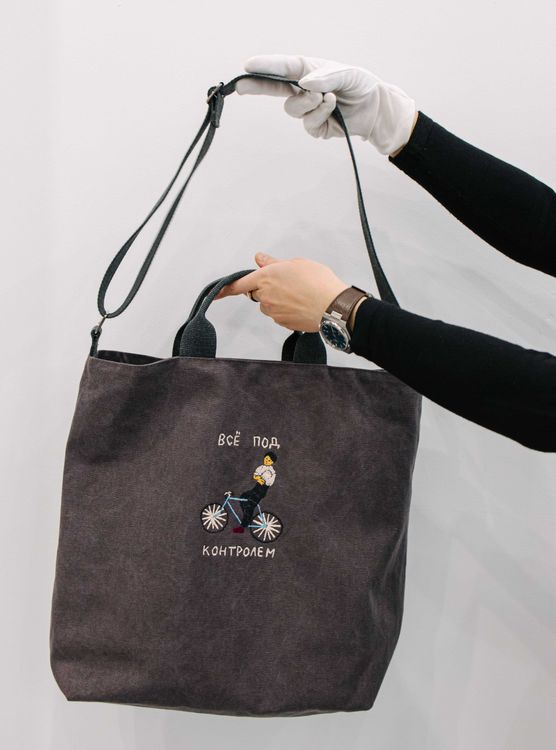
Thick cotton, machine embroidery. Dimensions of the bag: 38 x 44 x 10 cm. Belt up to 110 cm, inner pocket. The color of the belt and handles is gray.
DIDI GALLERY X SASHA BRAULOV TOTE BAG

2020-2022. Fabric, hand embroidery, 19x12 cm. Details about the work: 1920-1930s. Architect O. Wutke. Smolensk, st. Konenkova, 9-a
"Paris Commune house tower"
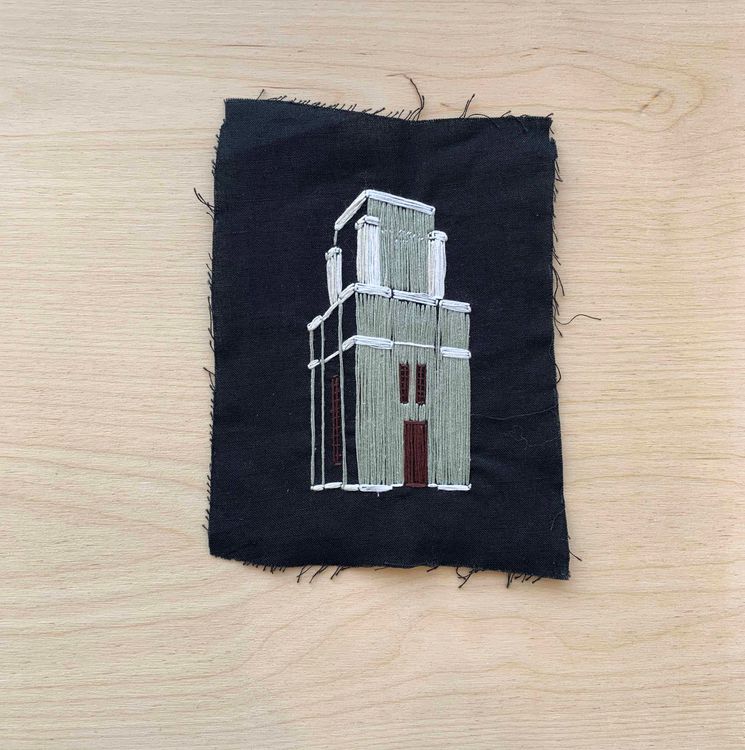
2020-2022. Fabric, hand embroidery, 17x12 cm. More about the work: 1920s. The architect is unknown. Serpukhov. Demolished in 2016.
"Artesian well building"

2020-2022. Fabric, hand embroidery, 11x18 cm. More about the work: 1930s. Architect K. Senchikhin. Baku, former Caspian street. The building was planned to be reconstructed in the 1970s, but in 2012 it was destroyed.
"The building of the sports society "Dynamo""
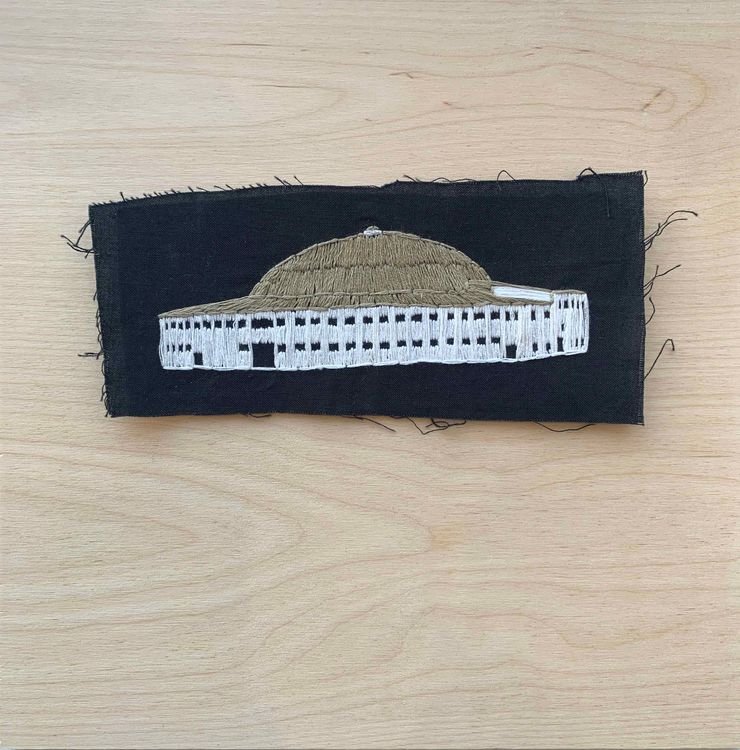
2020-2022. Fabric, hand embroidery, 9x19 cm. More about work: 1930s. Architect Ivankov N. Z. Stalingrad, st. Opolchenskaya, 11. Destroyed during WW II.
"The State Circus of the Stalingrad Tractor Plant"
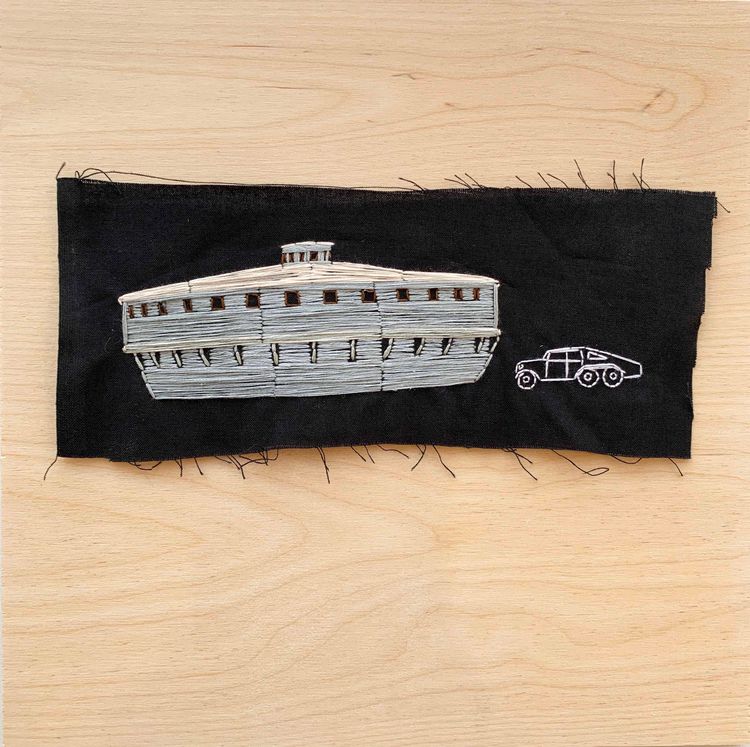
2020-2022. Fabric, hand embroidery, 10x22 cm. More about the work: 1930s. The architect is unknown. Leningrad.
"Sump of the main waterworks"

2020-2022, Fabric, hand embroidery, 9x18 cm. More about work: 1930s. Architect S. A. Minofiev and engineer B. V. Lopatin. The wooden building of the circus was demolished in 1975.
"Circus Ivanovo"
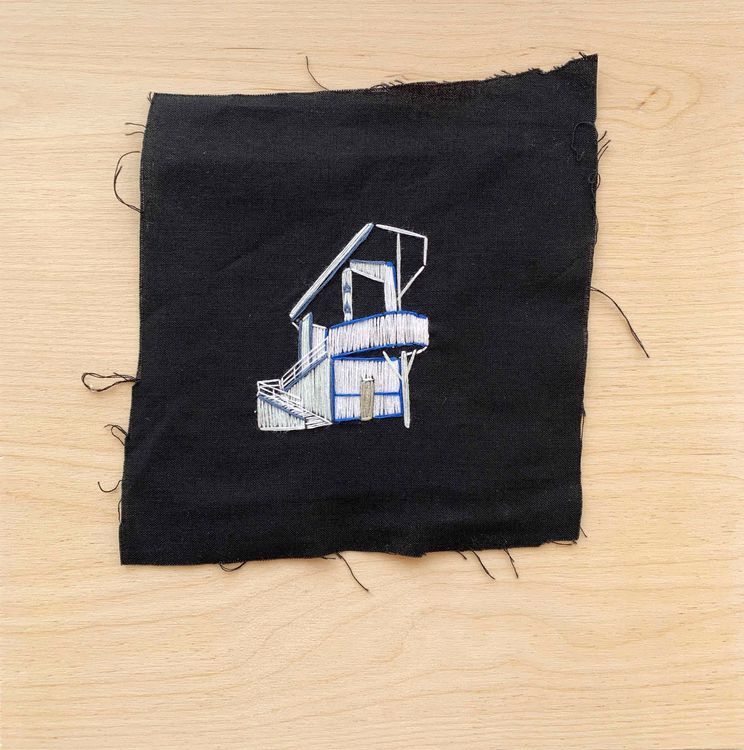
2020-2022. Fabric, hand embroidery, 18х16 cm. 1930s Architect A.S. Korobov. Izhevsk
"Pavilion in the park S.M. Kirov"

2020-2022. Fabric, hand embroidery, 11x16 cm. Details about the work: 1930s. The architect is unknown. Kolomna, street of the October Revolution, 318
"Dispensary"

2020-2022. Fabric, hand embroidery, 13x18 cm. More about the work: 1930s. Architect K. Mital. Irkutsk, Sverdlov street, 22
"Partaktiva residential building"
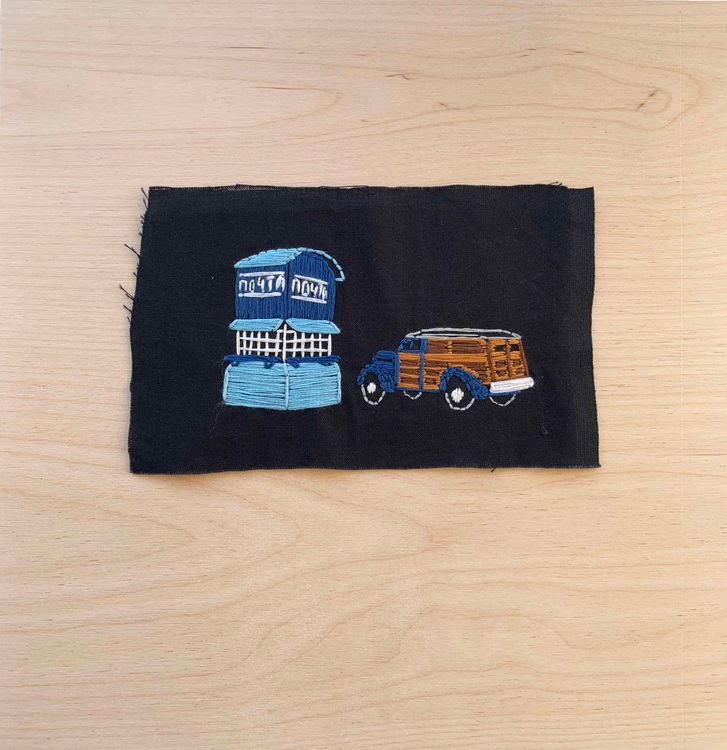
2021. Fabric, hand embroidery, 10x16 cm. More about work: 1930s. Architect unknown. Moscow, Central Park of Culture and Leisure. Not survived.
"Post kiosk and Moskvich - 420-422"

2020-2022. Fabric, hand embroidery, 9x14.5 cm. More about the work: 1930s. The architect is unknown. Harkov city. Not preserved.
